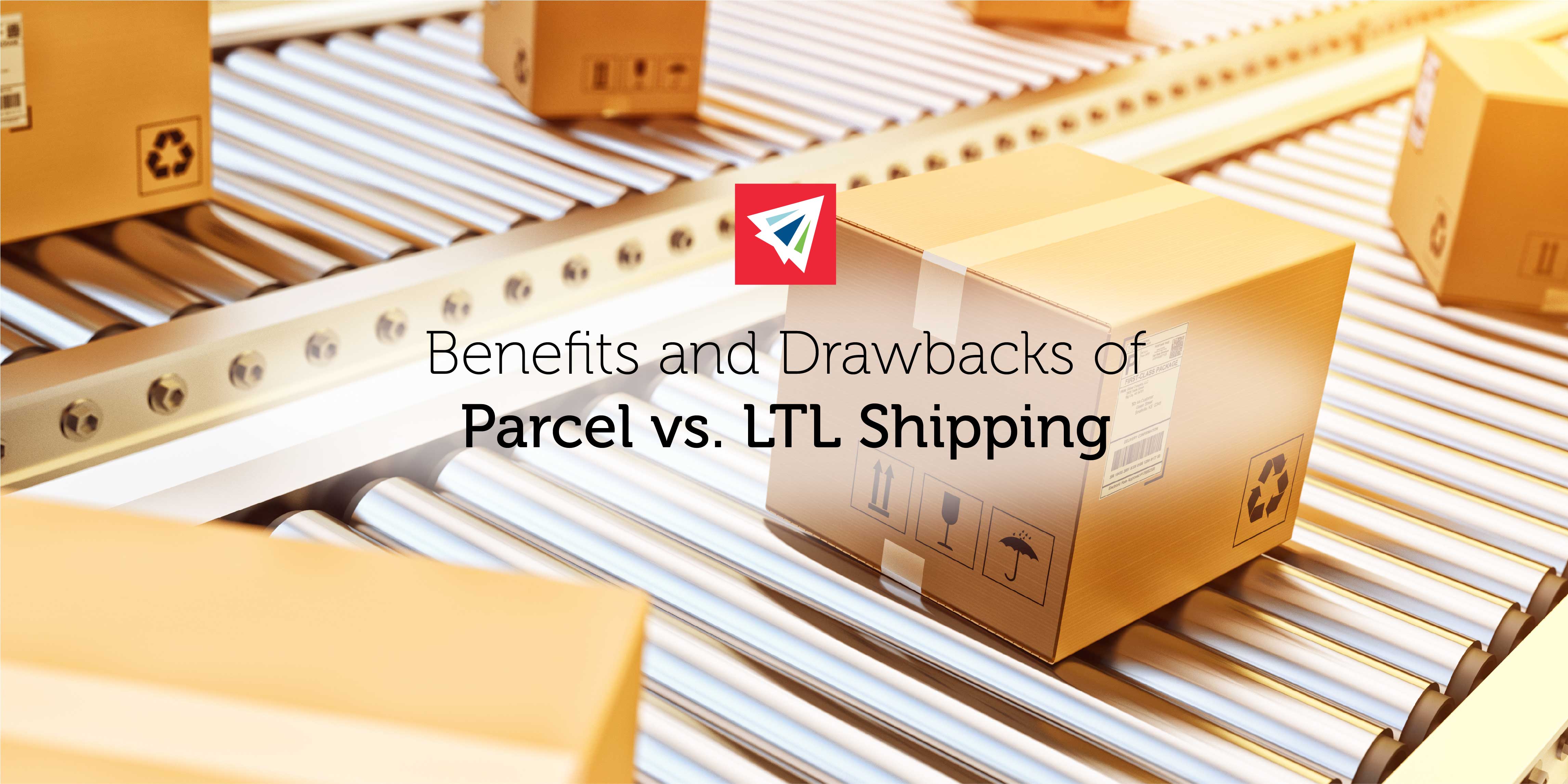With the distinguishing line between parcel shipping vs. LTL shipping being blurry at best, companies are not only questioning the qualifications for each mode of shipping but also which method may provide the greatest value and cost savings on their shipments. Although the general cutoff line is around 150lbs for parcel shipments, variation between vendors exist regarding the exact requirements and qualifications on LTL or parcel shipments.
Parcel Shipping vs. LTL Shipping
Pricing metrics for parcel shipping vs. LTL shipping continue to evolve (as if industry pricing standards weren’t volatile enough in the transportation market). Understanding the benefits and weaknesses of parcel shipping vs. LTL shipping can help you decide which option is best for your company.
Parcel Shipping
Shipments used to be categorized as parcel if they weighed in less than 150lbs or 165 inches in combined length and girth. However, many carriers are changing these rules, allowing some packages exceeding 150lbs to qualify as parcel shipments so long as they fit parcel dimension requirements. Depending on the types of products you ship and where you ship them to, getting a grasp on the benefits and drawbacks of parcel shipping can aid you in deciding if it’s the right method of shipping for your company.
Drawbacks of Parcel Shipping
Parcel shipments are subject to a higher rate of risk given their size and, in many cases, fragility. The forecasted amount of times your shipment will be consolidated and deconsolidated with others’ shipments all add to the time, money, and risk it takes to get the package to your destination. The main drawback with parcel shipping is that in all this commotion, your package suffers the risk of getting lost, damaged, or delayed; all of which can make for a nuisance on your end. On the flip side, here are some of the potential benefits to this method when comparing parcel shipping vs. LTL shipping.
Benefits of Parcel Shipping
Acknowledging the drawbacks to parcel shipping will leave you further informed on whether or not the benefits prove worthwhile. Amusingly, the benefits of parcel shipping are often just as contingent upon the risk of shipping the product as are the drawbacks. If a package is smaller, it will usually receive more attention than others. Additionally, this means that off-track packages are easily seen and reassigned to drivers. A huge advantage to parcel shipping is visibility. In contrast to LTL shipping, parcel shipping often provides shippers and buyers with full visibility of the shipping process from start to finish, and gives them more flexible options to reassign shipments to other drivers. This competition also gives the advantage of cost-breaks given the high volume of rivalry in the carrier market. Overall, parcel shipping is more cost-effective than LTL shipping.
LTL Shipping
Generally speaking, packages exceeding 150lbs or 165 inches in combined length and girth will be lumped into the LTL category, but it’s important to talk to your carrier to fully understand what qualifies as an LTL shipment. With so many shippers switching to parcel or small package shipping, the recent market trends have people believing that LTL is outdated. While research shows that LTL shipping may consistently come up as 10% less cost effective than parcel, there still exist a multitude of advantages that come through shipping your products via LTL. Let’s take a look first at a few disadvantages, and then dive into the strengths of this method.
Drawbacks of LTL Shipping
More often than not, the drawbacks of LTL shipping stem from the difficulty of moving oddly shaped freight. Couches, chairs, office supplies, and many other of the most popular LTL shipped items are inefficient in their use of space and pose a high risk for damage if not properly handled. For a multitude of LTL products, this means one of two outcomes: expensive shipping due to non-stackable freight, or, damaged cargo. It’s also important to keep in mind that LTL surcharges come in at a hefty 10-12%, thus outweighing the average parcel shipment surcharge of 2-3% by a lot. Keep in mind there are ways to save on LTL shipments.
Benefits of LTL Shipping
The true benefits of LTL are most recognized when shipping freight of a particular kind. If you are weighing your options between LTL and parcel, LTL may be the better pick if you are shipping oddly shaped or fragile goods that exceed 150 lbs. Each facility is different, but most LTL packages are handled via forklift while the majority of parcels are moved on a conveyer belt. Regardless of how you might interpret that at first glance, it is actually safer to have your bulky or odd-shaped items handled by a forklift rather than jamming them next to a bunch of other boxes on a conveyer belt.
Conclusion
For the sake of redundancy, it is important to note that the shipping industry is continually evolving. Due to the prior stated changes in parcel shipping services and qualifications, the modern transportation market has made the distinguishing factors between parcel shipping vs. LTL shipping very small. Many who have switched from LTL to parcel or vice versa claim that the differences are miniscule. At the end of the day, the best way to fully understand the differences between your carrier’s service offerings is to speak with them directly. Regardless of what modes of shipping you have used in the past, it’s important to navigate the ever-evolving volatility of the shipping market with an informed understanding of your options and developed relationships with freight forwarders and carriers.
If you have any questions – brief or expansive – on the topic, call us at Interlog USA and we’d be happy to help!

One thought on “Parcel Shipping vs. LTL Shipping”